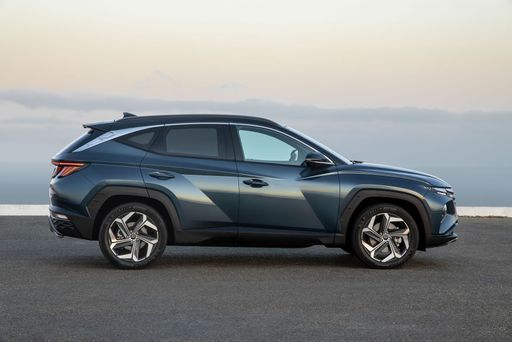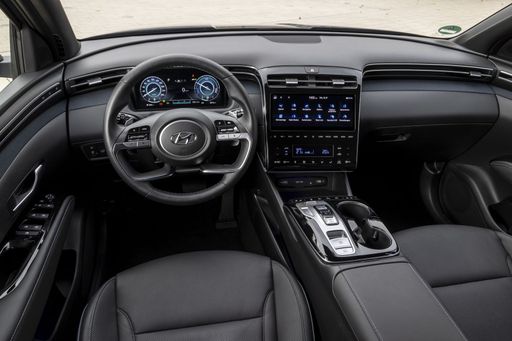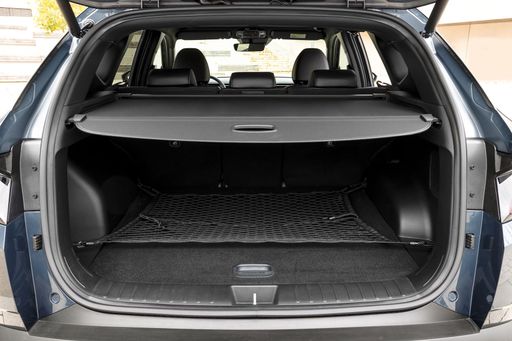Alfa Romeo Junior vs Hyundai Tucson – Which model is better for everyday use?
Two cars, one duel: Alfa Romeo Junior meets Hyundai Tucson.
Which one wins in performance, efficiency and value for money? Find out now!
Costs and Efficiency:
Price and efficiency are key factors when choosing a car – and this is often where the real differences emerge.
Alfa Romeo Junior has a somewhat advantage in terms of price – it starts at 25700 £, while the Hyundai Tucson costs 30600 £. That’s a price difference of around 4963 £.
Fuel consumption also shows a difference: Hyundai Tucson manages with 1 L and is therefore clearly more efficient than the Alfa Romeo Junior with 4.80 L. The difference is about 3.80 L per 100 km.
As for range, the Alfa Romeo Junior performs decisively better – achieving up to 410 km, about 340 km more than the Hyundai Tucson.
Engine and Performance:
Power, torque and acceleration say a lot about how a car feels on the road. This is where you see which model delivers more driving dynamics.
When it comes to engine power, the Alfa Romeo Junior has a barely noticeable edge – offering 280 HP compared to 252 HP. That’s roughly 28 HP more horsepower.
In acceleration from 0 to 100 km/h, the Alfa Romeo Junior is noticeable quicker – completing the sprint in 5.90 s, while the Hyundai Tucson takes 7.90 s. That’s about 2 s faster.
In terms of top speed, the Alfa Romeo Junior performs hardly perceptible better – reaching 206 km/h, while the Hyundai Tucson tops out at 194 km/h. The difference is around 12 km/h.
There’s also a difference in torque: Hyundai Tucson pulls hardly perceptible stronger with 367 Nm compared to 345 Nm. That’s about 22 Nm difference.
Space and Everyday Use:
Beyond pure performance, interior space and usability matter most in daily life. This is where you see which car is more practical and versatile.
Both vehicles offer seating for 5 people.
In curb weight, Alfa Romeo Junior is to a small extent lighter – 1380 kg compared to 1520 kg. The difference is around 140 kg.
In terms of boot space, the Hyundai Tucson offers noticeable more room – 620 L compared to 415 L. That’s a difference of about 205 L.
In maximum load capacity, the Hyundai Tucson performs evident better – up to 1799 L, which is about 519 L more than the Alfa Romeo Junior.
When it comes to payload, Hyundai Tucson clearly perceptible takes the win – 545 kg compared to 420 kg. That’s a difference of about 125 kg.
Who wins the race?
The Hyundai Tucson proves to be dominates this comparison and therefore becomes our DriveDuel Champion!
Hyundai Tucson is the better all-rounder in this comparison.
 @ Hyundai Motor Company
@ Hyundai Motor Company
Hyundai Tucson
Alfa Romeo Junior
The Alfa Romeo Junior captures the essence of Italian design with its sleek lines and compact dimensions, making it an icon of elegance and performance. With a spirited driving experience and a charming retro aesthetic, it appeals to enthusiasts and casual drivers alike. This delightful car embodies the brand's rich heritage while remaining a fun and engaging option for those seeking a unique automotive experience.
details @ Alfa Romeo / Stellantis Media
@ Alfa Romeo / Stellantis Media
 @ Alfa Romeo / Stellantis Media
@ Alfa Romeo / Stellantis Media
 @ Alfa Romeo / Stellantis Media
@ Alfa Romeo / Stellantis Media
Hyundai Tucson
Hyundai Tucson marries bold, sculpted looks with a clever, roomy cabin that feels smarter than its price tag suggests. It's composed on the road, easy to live with day-to-day, and a sensible choice for buyers who want SUV style without the showroom theatrics.
details @ Hyundai Motor Company
@ Hyundai Motor Company
 @ Hyundai Motor Company
@ Hyundai Motor Company
 @ Hyundai Motor Company
@ Hyundai Motor Company
 @ Hyundai Motor Company
@ Hyundai Motor Company
 @ Hyundai Motor Company
@ Hyundai Motor Company
 @ Alfa Romeo / Stellantis Media
@ Alfa Romeo / Stellantis Media
|
 @ Hyundai Motor Company
@ Hyundai Motor Company
|
|
|
|
Costs and Consumption |
|
|---|---|
|
Price
25700 - 41600 £
|
Price
30600 - 46300 £
|
|
Consumption L/100km
4.8 - 5.4 L
|
Consumption L/100km
1 - 6.9 L
|
|
Consumption kWh/100km
15.1 - 17.5 kWh
|
Consumption kWh/100km
-
|
|
Electric Range
344 - 410 km
|
Electric Range
64 - 70 km
|
|
Battery Capacity
0.4 - 51 kWh
|
Battery Capacity
-
|
|
co2
0 - 119 g/km
|
co2
22 - 156 g/km
|
|
Fuel tank capacity
44 - 45 L
|
Fuel tank capacity
42 - 54 L
|
Dimensions and Body |
|
|---|---|
|
Body Type
SUV
|
Body Type
SUV
|
|
Seats
5
|
Seats
5
|
|
Doors
5
|
Doors
5
|
|
Curb weight
1380 - 1689 kg
|
Curb weight
1520 - 1889 kg
|
|
Trunk capacity
340 - 415 L
|
Trunk capacity
546 - 620 L
|
|
Length
4173 mm
|
Length
4510 - 4520 mm
|
|
Width
1781 mm
|
Width
1865 mm
|
|
Height
1505 - 1538 mm
|
Height
1650 mm
|
|
Max trunk capacity
1205 - 1280 L
|
Max trunk capacity
1721 - 1799 L
|
|
Payload
390 - 420 kg
|
Payload
525 - 545 kg
|
Engine and Performance |
|
|---|---|
|
Engine Type
Electric, Petrol MHEV
|
Engine Type
Diesel MHEV, Petrol MHEV, Petrol, Full Hybrid, Plugin Hybrid
|
|
Transmission
Automatic
|
Transmission
Automatic, Manuel
|
|
Transmission Detail
Dual-Clutch Automatic, Reduction Gearbox
|
Transmission Detail
Dual-Clutch Automatic, Manual Gearbox, Automatic Gearbox
|
|
Drive Type
Front-Wheel Drive, All-Wheel Drive
|
Drive Type
Front-Wheel Drive, All-Wheel Drive
|
|
Power HP
136 - 280 HP
|
Power HP
136 - 252 HP
|
|
Acceleration 0-100km/h
5.9 - 9.1 s
|
Acceleration 0-100km/h
7.9 - 11.6 s
|
|
Max Speed
150 - 206 km/h
|
Max Speed
180 - 194 km/h
|
|
Torque
230 - 345 Nm
|
Torque
265 - 367 Nm
|
|
Number of Cylinders
3
|
Number of Cylinders
4
|
|
Power kW
100 - 207 kW
|
Power kW
100 - 185 kW
|
|
Engine capacity
1199 cm3
|
Engine capacity
1598 cm3
|
General |
|
|---|---|
|
Model Year
2024 - 2025
|
Model Year
2024
|
|
CO2 Efficiency Class
A, C, D
|
CO2 Efficiency Class
E, F, D, B
|
|
Brand
Alfa Romeo
|
Brand
Hyundai
|
What drive types are available for the Alfa Romeo Junior?
Available configurations include Front-Wheel Drive or All-Wheel Drive.
The prices and data displayed are estimates based on German list prices and may vary by country. This information is not legally binding.
